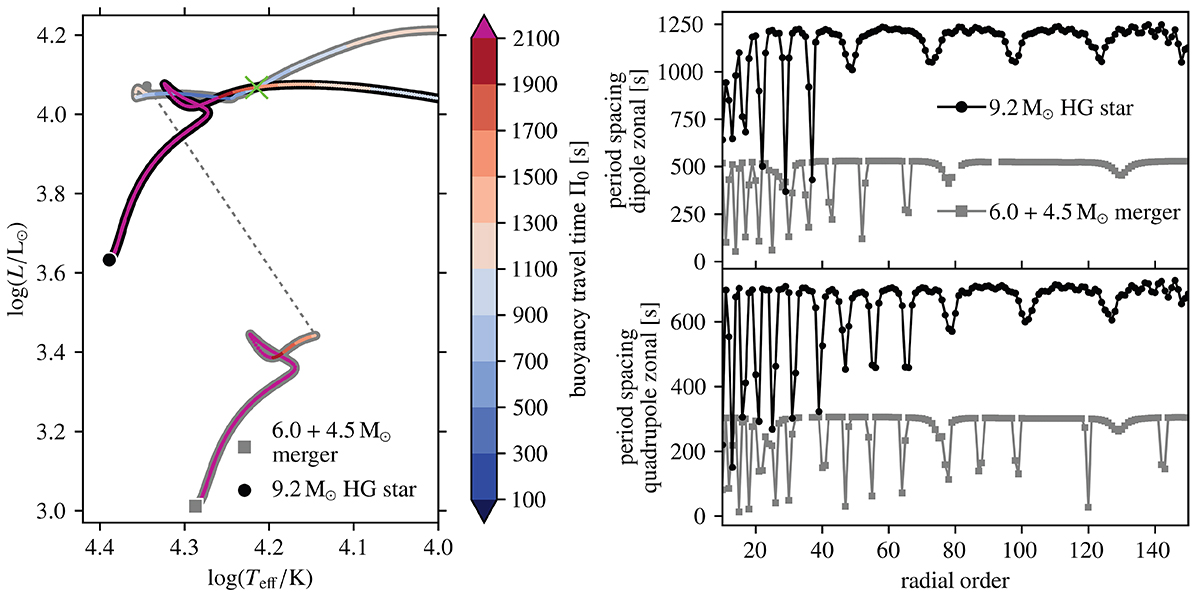Fig. 9.

Download original image
Illustration of the potential of merger seismology. The left panel shows two evolutionary tracks for non-rotating stellar models, colour-coded by the value of the buoyancy travel time Π0 defined in Eq. (17). The black dot indicates the position of a single star born with 9.2 M⊙ at the ZAMS. The grey square is the position of a 6.0 M⊙ primary at the ZAMS, accompanied by a 4.5 M⊙ close companion. The binary components merge via a Case B mass transfer following the description by Schneider et al. (2021). This happens when the primary evolves beyond the TAMS, as indicated by the dotted line. The single star and merger product reside in a similar position while crossing the Hertzsprung gap (HG). The right panels show the predicted period spacing patterns for dipole (upper panel) and quadrupole (lower panel) high-order g modes of the single star undergoing hydrogen shell burning (black circles) and of the merger product (grey squares), at the evolutionary stage indicated by the green cross in the left panel. At this time the merger burns helium in its convective core and has a convective region due to hydrogen shell burning, while the inner structure of the single star is fully radiative, including its shell burning region. The figure was produced by Jan Henneco, from models in Henneco et al. (2024).
Current usage metrics show cumulative count of Article Views (full-text article views including HTML views, PDF and ePub downloads, according to the available data) and Abstracts Views on Vision4Press platform.
Data correspond to usage on the plateform after 2015. The current usage metrics is available 48-96 hours after online publication and is updated daily on week days.
Initial download of the metrics may take a while.


